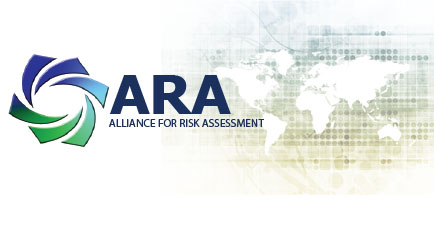ARA Dose-Response Framework
Frequently Asked Questions
The ARA Dose Response Framework is a product of the Beyond Science & Decisions workshop series, a collaboration of over 45 organizations representing government, industry, scientific societies, consultancies, and environmental NGOs. The series built on the ideas presented in the National Academy of Sciences’ Science and Decisions: Advancing Risk Assessment (2009). The framework was developed by panel members and workshop participants as a way of organizing the case studies and methods considered in the workshop series, in order to help identify gaps in methods and to aid risk assessors in identifying useful tools for different problem formulations. The draft framework was removed by the workshop panel and the DRAC. The Framework is intended as a tool to help guide the risk assessor in selecting an appropriate dose-response method based on data availability and risk management context, and to help the field of risk assessment identify gaps in methodology. Inclusion of a method or case study in the framework as an illustration of a useful technique does not imply panel acceptance of the chemical-specific outcome.
National Academy of Sciences (2009). Science and Decisions: Advancing Risk Assessment (NAS Final Report).http://cfpub.epa.gov/ncea/cfm/recordisplay.cfm?deid=202175
The Framework is an “evergreen” database, intended to grow and evolve over time to reflect the state of the science. It is envisioned that it wil be updated twice each year following the Science Panel's review of submitted case studies.
All methods included in the ARA Dose-Response Framework are reviewed by an Science Panel for completeness and utility. The panel review considered whether the case studies were scientifically defensible, useful relative to the problem formulation, practical, and made biological sense. The panelists were also asked to identify areas where case studies may need additional work. The panel focused on the case study methods, and did not review key decision points or final risk assessment results for the case studies that involved specific chemical assessments.
Panel review of submitted case studies is expected to occur twice each year.If you would like to suggest a method for inclusion in the framework, please contact Dr. Dourson
The Alliance for Risk Assessment (ARA) is a collaboration of organizations that fosters the development of technical chemical risk assessment products and services, through a team effort of specialists and organizations dedicated to protecting public health by improving the process and efficiency of risk assessment, and to increasing the capacity for developing risk values to meet growing demand. The ARA will coordinate with Federal and State Agencies whenever possible, to ensure the best use of available resources, and to avoid duplication of effort. To learn more about the Alliance and its projects, please visit Alliance for Risk.
In risk assessment, problem formulation is the phase in which the risk managers’ charge to the assessors is converted into an actionable plan for performing the assessment (EPA 1998; Suter 2007).
EPA (U.S. Environmental Protection Agency). 1998. Guidelines for Ecological Risk Assessment. EPA/630/R- 95/002F. Risk Assessment Forum, U.S. Environmental Protection Agency, Washington, DC. April 1998 [online]. Available: http://oaspub.epa.gov/eims/eimscomm.getfile?p_download_id=36512
Suter, G.W. 2007. Ecological Risk Assessment, 2nd Ed. Boca Raton, FL: CRC Press.
Questions? Suggestions? Please send your feedback to tera@tera.org.

